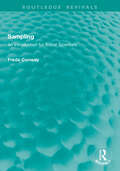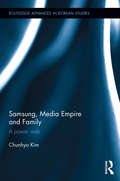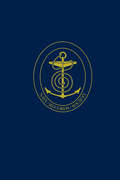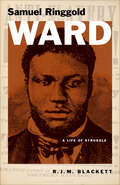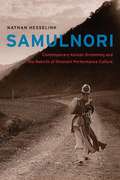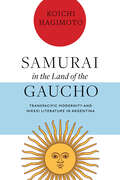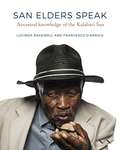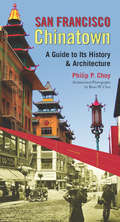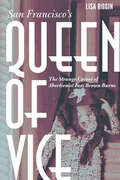- Table View
- List View
Samkalin Bharat Bhag-2 class 10 - Himachal Pradesh Board: समकालीन भारत भाग-२ कक्षा १० - हिमाचल प्रदेश बोर्ड
by Himachal Pradesh Board of School Education - Dharamshalaहिमाचल प्रदेश स्कूल शिक्षा बोर्ड, धर्मशाला द्वारा प्रकाशित कक्षा 10 के लिए " समकालीन भारत भाग-२" का डिजिटल संस्करण, 2017 से 2022 तक की विभिन्न संस्करणों और पुनर्मुद्रितियों को शामिल करता है। इसका सारांश पाठ्यक्रम और शिक्षण प्रक्रिया के माध्यम से शिक्षकों और छात्रों के बीच एक सेतु के रूप में काम करता है। यह मूल्यांकन, संबोधन, और अच्छी तरह से प्रस्तुत सामग्री की महत्वता पर जोर देता है। शिक्षा में सुधार की आवश्यकता पर ध्यान देते हुए राष्ट्रीय पाठ्यचर्चा रूपरेखा 2005 और परीक्षा सुधारों पर राष्ट्रीय फोकस समूह के स्थिति पत्र ने परीक्षाओं में पूछे जाने वाले प्रश्नों के तरीकों में बदलाव के लिए अपील की है। इस पुस्तक में कुल सात अध्याय है। संसाधन एवं विकास, वन एवं वन्य जीव संसाधन, जल संसाधन, कृषि, खनिज तथा ऊर्जा संसाधन, विनिर्माण उद्योग, राष्ट्रीय अर्थव्यवस्था की जीवन रेखाएँ आदी के बारे जानकारी दी गई है। राष्ट्रीय स्तर पर पाठ्यपुस्तकों के निर्माण का दायित्व एन. सी. ई. आर. टी. को दिया गया है ताकि शिक्षा के राष्ट्रीय स्तर पर समरूपता बनी रहे। हिमाचल प्रदेश शिक्षा बोर्ड, एन.सी.ई.आर.टी. का आभारी हैं क्योंकि उन्होंने हमें उनके द्वारा परिश्रमपूर्वक तैयार की गई पुस्तकों को पुनर्मुदित कर अपने छात्रों तक पहुंचाने का अधिकार दिया है। छात्रें में भू-स्थानिक कौशल विकसित करने के उद्देश्य से एनसीईआरटी तथा इसरो ने मिलकर ऑनलाइन वेब आधारित भू-स्थानिक पोर्टल स्कूल-भुवन-एनसीईआरटी बनाया है। इस भू-स्थानिक पोर्टल पर भूगोल की पाठ्यपुस्तकों में दिए गए मानचित्र उपलब्ध हैं। यह पोर्टल छात्रें में भू-स्थानिक तकनीक के उपयोग द्वारा भूगोल की विभिन्न संकल्पनाओं को समझने में मदद करता है।
Samkalin Bharat Bhag-2 class 10 - JCERT: समकालीन भारत भाग-२ १०वीं कक्षा - जेसीईआरटी
by Jharkhand Shaikshik Anusandhan Evam Prashikshan Parishad Ranchiसमकालीन भारत - 2 कक्षा 10 की भूगोल पाठ्यपुस्तक है, जो भारत के विभिन्न भौगोलिक, पर्यावरणीय और आर्थिक पहलुओं पर केंद्रित है। पुस्तक में कुल सात अध्याय हैं, जो संसाधनों, वन्य जीवन, जल संसाधनों, कृषि, खनिज और ऊर्जा संसाधनों, विनिर्माण उद्योगों और परिवहन जैसे महत्वपूर्ण विषयों को कवर करते हैं। पहला अध्याय संसाधन एवं विकास में संसाधनों के प्रकार और उनके सतत उपयोग की चर्चा है, जिसमें संसाधन नियोजन की आवश्यकता पर जोर दिया गया है। दूसरा अध्याय वन और वन्य जीव संसाधन भारत की जैव विविधता, लुप्तप्राय प्रजातियों और संरक्षण की आवश्यकता को रेखांकित करता है। जल संसाधन पर तीसरा अध्याय जल की कमी, जल संरक्षण और प्रबंधन के उपायों की आवश्यकता पर केंद्रित है। चौथे अध्याय कृषि में कृषि के प्रकार, फसलों की विविधता और राष्ट्रीय अर्थव्यवस्था में कृषि के योगदान की चर्चा की गई है। पांचवा अध्याय खनिज और ऊर्जा संसाधन विभिन्न प्रकार के खनिज और ऊर्जा संसाधनों, उनके वितरण और संरक्षण की आवश्यकता को समझाता है। विनिर्माण उद्योग पर छठा अध्याय उद्योगों के राष्ट्रीय अर्थव्यवस्था में महत्व और पर्यावरणीय समस्याओं का वर्णन करता है। अंत में, राष्ट्रीय अर्थव्यवस्था की जीवन रेखाएँ नामक सातवां अध्याय परिवहन और संचार सेवाओं की महत्ता, और उनके देश की अर्थव्यवस्था में योगदान को स्पष्ट करता है। यह पुस्तक छात्रों को भारत के समकालीन मुद्दों और संसाधनों के विवेकपूर्ण उपयोग के महत्व को समझाने का प्रयास करती है।
Samkara's Advaita Vedanta: A Way of Teaching (Routledge Hindu Studies Series)
by Jacqueline G. HirstSamkara (c.700 CE) has been regarded by many as the most authoritative Hindu thinker of all time. A great Indian Vedantin brahmin, Samkara was primarily a commentator on the sacred texts of the Vedas and a teacher in the Advaitin teaching line. This book serves as an introduction to Samkara's thought which takes this as a central theme. The author develops an innovative approach based on Samkara's ways of interpreting sacred texts and creatively examines the profound interrelationship between sacred text, content and method in Samkara's thought. The main focus of the book is on Samkara's teaching method. This method is, for Samkara, based on the Upanishads' own; it is to be employed by Advaitin teachers to draw pupils skilfully towards that realisation which is beyond all words. Consequently, this book will be of interest not only to students and scholars of Indian philosophy, but to all those interested in the relation between language and that which is held to transcend it.
Samooka Ariviyal (Social Science) 10th Standard - Tamilnadu Board
by Training State Council of Educational ResearchSamooka Ariviyal (Social Science) Textbook for the 10th Standard Students, preparing for Tamil Nadu State Board Exam.
Sampling Essentials: Practical Guidelines for Making Sampling Choices
by Johnnie N. DanielWritten for students taking research methods courses, this text provides a thorough overview of sampling principles. The author gives detailed, nontechnical descriptions and guidelines with limited presentation of formulas to help students reach basic research decisions, such as whether to choose a census or a sample, as well as how to select sample size and sample type. Intended for students and researchers in the social and behavioral sciences, public health research, marketing research, and related areas, the text provides nonstatisticians with the concepts and techniques they need to do quality work and make good sampling choices.
Sampling and Choosing Cases in Qualitative Research: A Realist Approach
by Nick EmmelAll qualitative researchers sample, yet methods of sampling and choosing cases have received relatively little attention compared to other qualitative methods. This innovative book critically evaluates widely used sampling strategies, identifying key theoretical assumptions and considering how empirical and theoretical claims are made from these diverse methods. Nick Emmel presents a groundbreaking reworking of sampling and choosing cases in qualitative research. Drawing on international case studies from across the social sciences he shows how ideas drive choices, how cases are used to work out the relation between ideas and evidence, and why it is not the size of a sample that matters, it is how cases are used to interpret and explain that counts. Fresh, dynamic and timely, this book is essential reading for researchers and postgraduate students engaging with sampling and realism in qualitative research.
Sampling, Biting, and the Postmodern Subversion of Hip Hop
by Jim VernonDrawing on the culture’s history before and after the birth of rap music, this book argues that the values attributed to Hip Hop by ‘postmodern’ scholars stand in stark contrast with those that not only implicitly guided its aesthetic elements, but are explicitly voiced by Hip Hop’s pioneers and rap music’s most consequential artists. It argues that the structural evacuation of the voices of its founders and organic intellectuals in the postmodern theorization of Hip Hop has foreclosed the culture’s ethical values and political goals from scholarly view, undermining its unity and progress. Through a historically informed critique of the hegemonic theoretical framework in Hip Hop Studies, and a re-centering of the culture’s fundamental proscription against ‘biting,' this book articulates and defends the aesthetic and ethical values of Hip Hop against their concealment and subversion by an academic discourse that merely ‘samples’ the culture for its own reactionary ends.
Sampling: An Introduction for Social Scientists (Routledge Revivals)
by Freda ConwaySampling (1967) aims to simplify sampling theory for social scientists, many of whom are unwilling mathematicians. It discusses percentages and weighted averages; frequency distributions, their means and variances; experimental and theoretical sampling distributions; problems of estimation and significance; practical sampling schemes and some of the difficulties of devising questionnaires. All these topics are illustrated by practical examples.
Samrāṅgṇasūtradhār: Decoding the Historical Architectural Treatise
by Neena Singh ZutshiThe Samrāṅgṇasūtradhār compiled arounf the 11th century by Rājā Bhoj is a significant treatise on architecture from pre-colonial India. The book presents and interpretive architectural analysis of select content of the Samrāṅgṇasūtradhār,explores the design process to generate temples, palaces, and dwelling units, and discusses its correlation with contemporary architectural paradigms. Also, the book looks at contemporary issues of identity and culture, as well as critical issues int he historiography of architecture in the postcolonial Indian subcontinent while unveiling layers of the traditional knowekedge systems informing the popular idiom of the Vāstū Shastra. Strongly rooted in archival resources, this book will be indispensable for scholars of history of Indian architecture, heritage studies, South Asian history, conversation, architectural design processes, compuational architecture, and postcolonial studies.
Samson’s Cords: Imposing Oaths in Milton, Marvell, and Butler
by Alex GarganigoIn seventeenth-century Britain every debate about loyalty oaths invoked the biblical Samson. Samson’s Cords argues that these loyalty tests became an unprecedentedly pervasive feature of life in Restoration England and that writers of satire and epic had no choice but to respond. Alex Garganigo examines the radically different responses of John Milton, Andrew Marvell, and Samuel Butler to the existential crises caused by this explosion of loyalty oaths. After early support, all three developed serious reservations, confronting the irony that while oaths often exclude and destroy, they also include and create. Tackling issues such as performance, ritual, religion, secularization, gender, swearing, republicanism, and citizenship, Garganigo offers original readings of Paradise Lost, Samson Agonistes, An Horatian Ode upon Cromwell’s Return from Ireland, The Rehearsal Transpros’d, and Hudibras.
Samsung, Media Empire and Family: A power web (Routledge Advances in Korean Studies)
by Chunhyo KimThis book analyses media conglomerates owning multiple media holdings under centralized ownership within and across media markets. It argues that Asian capitalists utilize both a market-oriented ideology and family connections to build their media empires, thereby creating cultural conglomerates that exercise corporate censorship over media markets. It focuses on family-controlled media conglomerates in Korea, specifically the international business giant, Samsung, and its related media companies, Cheil Jedang and JoongAng Ilbo, all of which are controlled by the single Lee family. Utilizing the theoretical approach of political economy of communication, the book examines how and why the Lee family exercise corporate censorship over Korean society. Offering an essential take on Asia’s political economy of communication in order to understand the workings of Asian media empires, this book will appeal to students and scholars of Korean Studies, Korean Business and Mass Communications.
Samuel Joseph Agnon, Psychoanalysis and Jewish History: A Comparative Study (Routledge Jewish Studies Series)
by David AberbachSamuel Joseph Agnon, Psychoanalysis and Jewish History: A Comparative Study compares the writings of Samuel Joseph Agnon (1887–1970) with other writers, including Gustav Flaubert, Franz Kafka, D.H. Lawrence, and Carl Gustav Jung, as well as his great Hebrew predecessors, Mendele Mocher Sefraim and Chaim Nachman Bialik, who drew on the ancient Jewish biblical and rabbinic tradition in creating a modern secular literature.Through close readings of Agnon’s fiction in comparison with some of his great contemporaries, the reader comes to a new appreciation of the richness and psychological depth of modern Hebrew literary art and its roots in ancient Jewish history and literature; of Agnon as a major figure bridging the traditional culture of the pre-1939 East European Jews with the modern world; of Hebrew fiction amid tumultuous historical change, as its centre shifted in the early 20th century from Eastern Europe to Tel Aviv; and of the centrality of Hebrew literature in the rise of modern Jewish nationalism as anti-Semitism grew.This book is of particular value to students of Hebrew and Comparative Literature and of psychoanalysis and the sociology of literature, but it is written clearly and without jargon and has much interest to the general reader.
Samuel Pepys and the Second Dutch War: Pepys's Navy White Book and Brooke House Papers
by Pepys SamuelThe two pieces of work which make up this volume were compiled by Pepys in the 1660s. The first is Pepys’s own record of how the Navy Board functioned. It records details of meetings with fellow officers such as Sir William Penn and Sir John Mennes, and how work could be hampered at times by the refusal of an officer to sign a contract or bill as he had not been present at the original discussions.The Navy White Book gives the discussions which took place over a variety of matters, such as, contracts with Sir William Warren, a timber merchant; costs and quality of masts and canvas.The Brooke House Papers deal with the inquiry set up by the House of Commons into the conduct of the Second Dutch War, following the humiliation of the Dutch invasion of 1667, and the inefficiency of the Navy Board. The Brooke House Papers further show Pepys defending the Navy Board’s professionalism and integrity, and also that naval administration during the Second Dutch War was efficient. The Papers also show Charles II ‘s role in protecting the Navy Board, by making his dissatisfaction with the inquiry known, through his disrespectful language and interruptions, as well as his support for Pepys, whom he makes the Board’s spokesman.
Samuel Ringgold Ward: A Life of Struggle (Black Lives)
by R. J. BlackettThe rediscovery of a pivotal figure in Black history and his importance and influence in the struggle against slavery and discrimination Born on the Eastern Shore of Maryland, Samuel Ringgold Ward (1817–c. 1869) escaped enslavement and would become a leading figure in the struggle for Black freedom, citizenship, and equality. He was extolled by his contemporary Frederick Douglass for his &“depth of thought, fluency of speech, readiness of wit, logical exactness.&” Until now, his story has been largely untold. Ward, a newspaper editor, Congregational minister, and advocate for the temperance movement, was considered one of the leading orators of his time. After the passage of the Fugitive Slave Act of 1850 he fled to Canada, where he lectured widely to improve conditions for formerly enslaved people who had settled there. Ward then went to Britain as an agent of the Canadian Antislavery Society and published his influential book Autobiography of a Fugitive Negro. He never returned to the United States, and he died in obscurity in Jamaica. Despite Ward&’s prominent role in the abolitionist movement, his story has been lost because of the decades he spent in exile. In this book, R. J. M. Blackett brings light to Ward&’s life and his important role in the struggle against slavery and discrimination, and to the personal price he paid for confronting oppression.
Samuel Smiles and the Victorian Work Ethic (Routledge Library Editions: The Victorian World #49)
by Tim TraversSamuel Smiles is best known for his book Self Help (1859), which many have assumed to be an encouragement to social and financial success. However, Smiles actually argued against the single-minded pursuit of success, and in favour of the protean formation of character as the ultimate goal of life. First published in 1987, this book examines Samuel Smiles’ ideals of work and self-help against the background of the Victorian work ethic. Drawing on ‘sub-literature’ such as pamphlets, periodicals, novels, works by Dissenting and Anglican ministers, popular ‘success’ and ‘self-improvement’ books, and general literature on the condition of the working classes, it presents a broad range of public opinion and attitudes towards work and in doing so, creates an essential framework and context for Smiles’ popular books. This book will be of interest to those studying Victorian history and ideology.
SamulNori
by Nathan HesselinkIn 1978, four musicians crowded into a cramped basement theater in downtown Seoul, where they, for the first time, brought the rural percussive art of p'ungmul to a burgeoning urban audience. In doing so, they began a decades-long reinvention of tradition, one that would eventually create an entirely new genre of music and a national symbol for Korean culture. Nathan Hesselink's SamulNori traces this reinvention through the rise of the Korean supergroup of the same name, analyzing the strategies the group employed to transform a museum-worthy musical form into something that was both contemporary and historically authentic, unveiling an intersection of traditional and modern cultures and the inevitable challenges such a mix entails. Providing everything from musical notation to a history of urban culture in South Korea to an analysis of SamulNori's teaching materials and collaborations with Euro-American jazz quartet Red Sun, Hesselink offers a deeply researched study that highlights the need for traditions--if they are to survive--to embrace both preservation and innovation.
SamulNori: Contemporary Korean Drumming and the Rebirth of Itinerant Performance Culture (Chicago Studies in Ethnomusicology)
by Nathan HesselinkIn 1978, four musicians crowded into a cramped basement theater in downtown Seoul, where they, for the first time, brought the rural percussive art of p’ungmul to a burgeoning urban audience. In doing so, they began a decades-long reinvention of tradition, one that would eventually create an entirely new genre of music and a national symbol for Korean culture. Nathan Hesselink’s SamulNori traces this reinvention through the rise of the Korean supergroup of the same name, analyzing the strategies the group employed to transform a museum-worthy musical form into something that was both contemporary and historically authentic, unveiling an intersection of traditional and modern cultures and the inevitable challenges such a mix entails. Providing everything from musical notation to a history of urban culture in South Korea to an analysis of SamulNori’s teaching materials and collaborations with Euro-American jazz quartet Red Sun, Hesselink offers a deeply researched study that highlights the need for traditions—if they are to survive—to embrace both preservation and innovation.
Samurai Rising: The Epic Life of Minamoto Yoshitsune
by Pamela S. Turner Gareth HindsMinamoto Yoshitsune should not have been a samurai. But his story is legend in this real-life Game of Thrones. This epic tale of warriors and bravery, rebellion and revenge, reads like a novel, but this is the true story of the greatest samurai in Japanese history. <P><P>When Yoshitsune was just a baby, his father went to war with a rival samurai family--and lost. His father was killed, his mother captured, and his brothers sent away. Yoshitsune was raised in his enemy's household until he was sent away to live in a monastery. He grew up skinny and small. <P>Not the warrior type. But he did inherit his family pride and when the time came for the Minamoto to rise up against their enemy once again, Yoshitsune was there. <P>His daring feats, such as storming a fortress by riding on horseback down the side of a cliff and his glorious victory at sea, secured Yoshitsune's place in history and his story is still being told centuries later.
Samurai among Panthers: Richard Aoki on Race, Resistance, and a Paradoxical Life (Critical American Studies)
by Diane C. FujinoAn iconic figure of the Asian American movement, Richard Aoki (1938–2009) was also, as the most prominent non-Black member of the Black Panther Party, a key architect of Afro-Asian solidarity in the 1960s and &’70s. His life story exposes the personal side of political activism as it illuminates the history of ethnic nationalism and radical internationalism in America. A reflection of this interconnection, Samurai among Panthers weaves together two narratives: Aoki&’s dramatic first-person chronicle and an interpretive history by a leading scholar of the Asian American movement, Diane C. Fujino. Aoki&’s candid account of himself takes us from his early years in Japanese American internment camps to his political education on the streets of Oakland, to his emergence in the Black Panther Party. As his story unfolds, we see how his parents&’ separation inside the camps and his father&’s illegal activities shaped the development of Aoki&’s politics. Fujino situates his life within the context of twentieth-century history—World War II, the Cold War, and the protests of the 1960s. She demonstrates how activism is both an accidental and an intentional endeavor and how a militant activist practice can also promote participatory democracy and social service. The result of these parallel voices and analysis in Samurai among Panthers is a complex—and sometimes contradictory—portrait of a singularly extraordinary activist and an expansion and deepening of our understanding of the history he lived.
Samurai in the Land of the Gaucho: Transpacific Modernity and Nikkei Literature in Argentina
by Koichi HagimotoIn the early twentieth century, historical imaginings of Japan contributed to the Argentine vision of &“transpacific modernity." Intellectuals such as Eduardo Wilde and Manuel Domecq García celebrated Japanese customs and traditions as important values that can be integrated into Argentine society. But a new generation of Nikkei or Japanese Argentines is rewriting this conventional narrative in the twenty-first century. Nikkei writers such as Maximiliano Matayoshi and Alejandra Kamiya are challenging the earlier, unapologetic view of Japan based on their own immigrant experiences. Compared to the experience of political persecution against Japanese immigrants in Brazil and Peru, the Japanese in Argentina generally lived under a more agreeable sociopolitical climate. In order to understand the "positive" perception of Japan in Argentine history and literature, Samurai in the Land of the Gaucho turns to the current debate on race in Argentina, particularly as it relates to the discourse of whiteness. One of the central arguments is that Argentina's century-old interest in Japan represents a disguised method of (re)claiming its white, Western identity. Through close readings of diverse genres (travel writing, essay, novel, short story, and film) Samurai in the Land of the Gaucho yields a multi-layered analysis in order to underline the role Japan has played in both defining and defying Argentine modernity from the twentieth century to the present.
San Elders Speak: Ancestral knowledge of the Kalahari San
by Lucinda Backwell Francesco d'ErricoThis richly illustrated book documents indigenous knowledge and uses of San material culture and artefacts collected a century ago, as described by KhoiSan elders to the authors.
San Francisco Chinatown
by Philip P. ChoySan Francisco Chinatown is the first "insider's guide" to one of America's most celebrated ethnic enclaves by an author born and raised there. Both a history of America's oldest Chinese community and a guide to its significant sites and architecture, San Francisco Chinatown traces the development of the neighborhood from the city's earliest days to its post-quake transformation into an "oriental" tourist attraction as a pragmatic means of survival. Written by architect and Chinese American studies pioneer Philip P. Choy, and featuring photographs and walking tours, the book details the triumphs and tragedies of the Chinese American experience in the United States.
San Francisco's Forgotten Cemeteries: A Buried History (The History Press)
by Beth WinegarnerDigging into a forgotten past - and the dead left behind. San Francisco is famous for not having any cemeteries, but the claim isn't exactly what it seems. In the early 20th Century, the city relocated more than 150,000 graves to the nearby town of Colma to make way for a rapidly growing population. But an estimated fifty to sixty thousand burials were quietly built over and forgotten, only to resurface every time a new building project began. The dead still lie beneath some of the city's most cherished destinations, including the Legion of Honor, United Nations Plaza, the Asian Art Museum and the University of San Francisco. Join author Beth Winegarner as she maps the city's early burial grounds and brings back to life the dead who've been erased.
San Francisco's Queen of Vice: The Strange Career of Abortionist Inez Brown Burns
by Lisa RigginSan Francisco’s Queen of Vice uncovers the story of one of the most skilled, high-priced, and corrupt abortion entrepreneurs in America. Even as Prohibition was the driving force behind organized crime, abortions became the third-largest illegal enterprise as state and federal statutes combined with changing social mores to drive abortionists into hiding. Inez Brown Burns, a notorious socialite and abortionist in San Francisco, made a fortune providing her services to desperate women throughout California. Beginning in the 1920s, Burns oversaw some 150,000 abortions until her trial and conviction brought her downfall. In San Francisco’s Queen of Vice, Lisa Riggin tells the story of the rise and fall of San Francisco’s “abortion queen” and explores the rivalry between Burns and the city’s newly elected district attorney, Edmund G. “Pat” Brown (father of the present governor of California). Pledging to clean up the graft-ridden city, Brown exposed the hidden yet not-so-secret life of backroom deals, political payoffs, and corrupt city cops. Through the arrest, prosecution, and conviction of Burns, Brown used his success as a stepping-stone for his political rise to California’s governor’s mansion. Featuring an array of larger-than-life characters, Riggin shows how Cold War domestic ideology and the national quest to return to a more traditional America quickly developed into a battle against internal decay. Based on a combination of newspaper accounts, court records, and personal interviews, San Francisco’s Queen of Vice reveals how the drama played out in the life and trial of one of the wealthiest women in California history.
San Jose's Japantown (Images of America)
by James NagaredaThe Japanese started to arrive in San Jose, California, around 1890 in the Heinlenville area, which was once on the outskirts of the city. Many of the businesses that the Japanese opened would serve the needs of the growing Japanese population, who came to the Santa Clara Valley to take advantage of opportunities in the agricultural industry. Out of 46 Japantowns, only three remain in California. San Jose�s Japantown is unique in that it is the only surviving Japantown that has remained in its original location. Today, San Jose�s Japantown is a thriving and evolving mix of traditional and contemporary arts, culture, and lifestyle.





